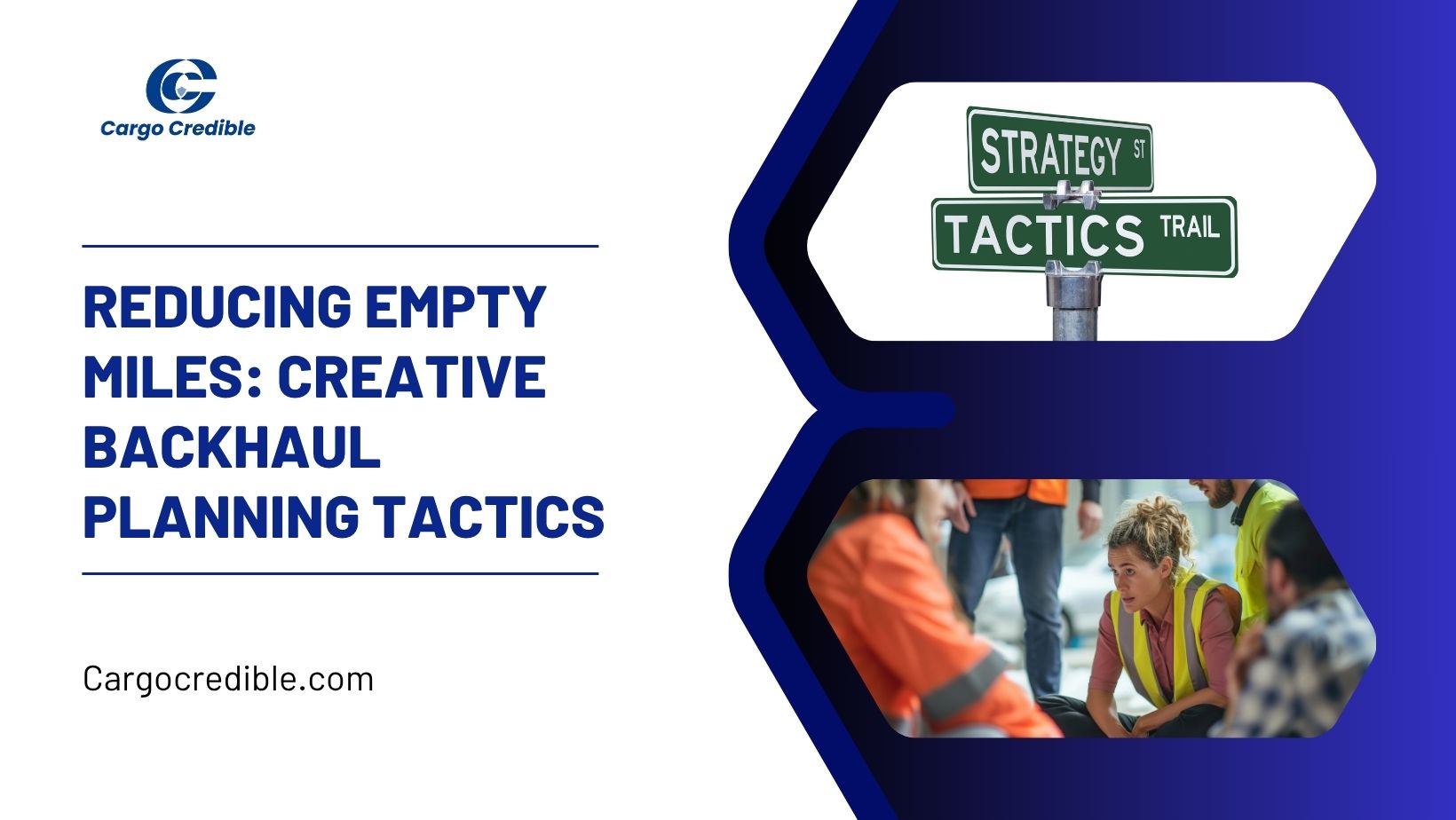Reducing Empty Miles – Creative Backhaul Planning Tactics

Welcome back to our deep dive into operational efficiency and profitability in trucking! Today, we’re focusing on a super important topic: reducing empty miles using smart backhaul planning. And don’t worry—we’ll explain it so that even a 7th grader can understand. Let’s roll
What Are Empty Miles?
Imagine you're driving your school bus home after dropping off all the kids—but there are no passengers on board. That trip is like an empty mile in trucking. When a truck drives with no cargo, it’s called driving “empty miles” or “deadhead miles.”
Why is this bad?
- Wastes fuel: The truck burns gas but carries nothing valuable.
- Loses time: Drivers are on the road but not earning money.
- Causes wear and tear: Trucks still get worn down even when empty.
- No profit made: Empty miles are miles without income.
Empty miles seriously hurt trucking companies’ money and waste valuable resources.
What’s a Backhaul?
The smart way to cut down empty miles is through something called backhaul planning.
A backhaul means finding a load to carry on the return trip after delivering something. This means:
- Less empty driving
- More deliveries
- More money for the trucking company
- Less wasted fuel
For example, if your school bus picked up a soccer team on the way back to the depot after dropping off the kids, that would be a backhaul. The same idea works in trucking!
Why Backhaul Planning Matters
Backhaul planning helps trucking companies:
- Save fuel and reduce pollution
- Earn more money by carrying loads both ways
- Avoid wasting drivers’ time and keep them busy
- Reduce carbon emissions by decreasing unnecessary truck miles
But backhaul planning is tricky. Sometimes there aren’t loads near the drop-off point. So trucking companies get creative with their planning.
Creative Backhaul Planning Tactics
Here are clever ways trucking companies reduce empty miles and make every trip count:
1. Use Load Boards & Apps
Like Uber for trucks, load boards and apps (e.g., DAT One, Truckstop.com) show available shipments across the country. Drivers can:
- See if there’s a load near where they just delivered
- Find a backhaul to carry on the way back
- Book the return load quickly through the app
- This helps trucks avoid empty trips by always finding something to haul.
2. Partner with Other Companies (Collaborative Logistics)
Companies team up to share load information. For example:
- A company delivering soda to City A partners with another needing flour delivered back to City B
- They coordinate so trucks go full both ways
- This teamwork reduces costs and benefits everyone.
3. Plan Smarter Routes
Dispatchers use software to find routes that make it easier to pick up backhauls. The software considers:
- Nearby pickup points
- Routes passing by other businesses
- Weather and traffic to avoid delays
- This lets trucks fit in return loads without much detour, reducing empty miles.
4. Mix Loads with Multi-stop Backhauls
Instead of one big load, trucks pick up multiple smaller loads on the return trip. For example:
- Three small deliveries from nearby towns on the way back
- This fills the truck and uses space efficiently, saving fuel.
5. Use Predictive Data
Companies use AI and data analytics to forecast where loads will be needed in coming days or weeks. This helps them:
- Plan backhauls ahead of time
- Adjust routes and schedules proactively
- Account for factors like weather or fuel prices
- Smart planning reduces last-minute empty trips.
6. Work with Freight Brokers
Freight brokers connect truckers with companies needing cargo moved. They:
- Match trucks with suitable return loads
- Help drivers avoid empty miles by filling their routes efficiently.
7. Diversify What You Haul
Carrying different types of goods increases backhaul options. For example:
- A refrigerated truck may carry frozen food out and non-perishable goods like paper or electronics back
- This versatility helps trucks find more loads.
Real-Life Story: Making Both Trips Count
A company shipping bicycles from Chicago to Denver used to return empty. Through backhaul planning, they found a Denver company shipping ski equipment back to Chicago. Now, both trips are profitable and efficient—no wasted miles!
Quick Recap: Key Terms
Empty miles are like wasted homework time—you’re working but not getting credit. Smart backhaul planning turns those empty trips into money-making journeys. By harnessing technology, teamwork, route optimization, and data insights, trucking companies can keep their trucks moving full almost all the time. That’s great for business, better for the planet, and helps keep roads safer and less congested.
So next time you see a truck zoom past, remember: behind every load is smart planning working hard to make every mile count!
What have you noticed about trucks on the road? Have you seen companies carrying different goods on the way back or using creative ways to avoid empty miles? Share your thoughts below!
Comments (0)
- No comments yet.